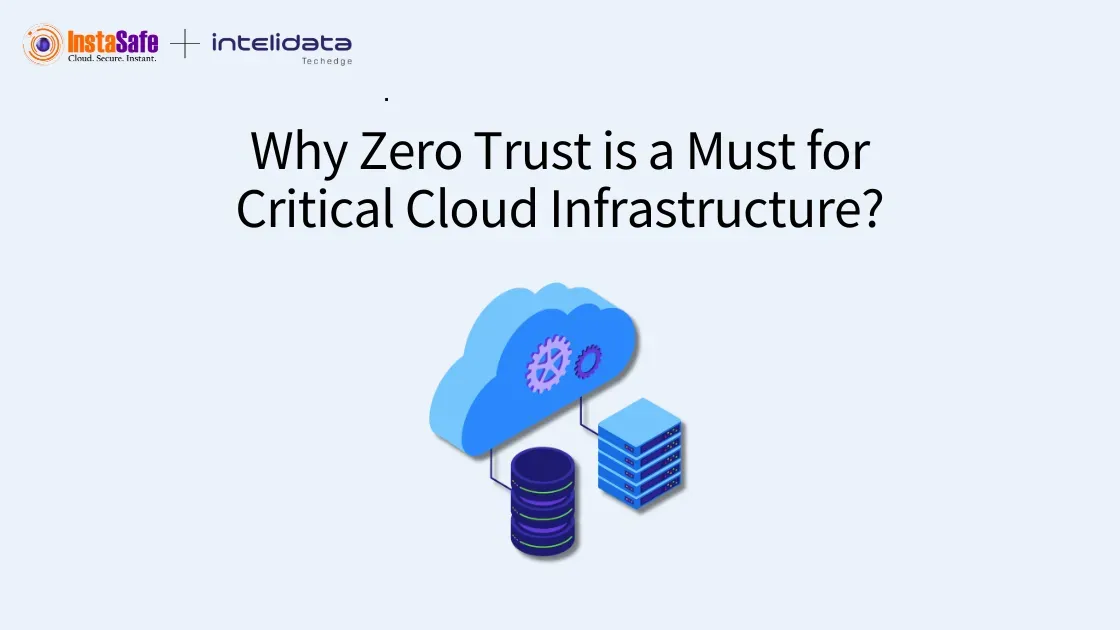Why Zero Trust is a Must for Critical Cloud Infrastructure

Security fears have grown more significant than in any era because of the increasingly digital business world, which relies on cloud infrastructure for the storage, processing, and management of critical data. In times when cyber threats are getting more intricate and disruptive, combined with potentially devastating breaches, adopting a proactive approach toward security is no longer optional: it is imperative. This is where the concept of Zero Trust comes into play.
Zero Trust is a security model based on the premise that there should not be trust in any other entity, either within or outside an organization's network perimeter. Not only does Zero Trust denote zero trust in all other entities; instead, other than typical and conventional perimeter-based measures like firewalls, it holds that there must be a continuous re-verification mechanism and stringent access controls to sensitive data and resources. This goes without saying; the approach is essential for the most critical cloud infrastructure where stakes are high and the cost of a breach, with its potential impact, may be catastrophic.
Here are some of the compelling reasons why Zero Trust is a must-have for crucial cloud infrastructure:
Evolving Threat Landscapes: The sophistication of cyber threats continues to grow, with attackers continuing to find new ways to take advantage of loopholes. Old traditional security measures, such as perimeter-based defenses, no longer hold water against advanced threats. A zero-trust setup gives a better and more adaptive security framework that enables a focus on data and resources across any location and does not respect the perimeter of the network.
Dynamic Nature of Cloud Environments: Resources in cloud environments are all dynamic, as they are provisioned and de-provisioned based on demand. Traditional security models are primarily static in nature, not built with enough agility to be reactive to the dynamism of these environments, and usually come out as a source of security gaps and vulnerabilities for these environments. Zero Trust is agile by design, ensuring organizations can enforce consistent security policies across their dynamic cloud infrastructure.
Insider Threats: Organizations face an excellent level of exposure because infiltrations from malicious insiders or compromised accounts can usually bypass standard perimeter-based security measures. Zero Trust mitigates this risk by having stringent access controls and constantly monitoring for suspicious activity, whether inside or outside an organization's network.
Compliance Requirements: Most industries, especially dealing with healthcare and finance, come with stringent regulatory compliance requirements about data security and privacy. Zero Trust provides a framework through which the controls and measures required can be met for this regulation compliance, thus reducing the associated penalties from non-compliance and reputational harm.
Secure Sensitive Data: Most critical cloud infrastructures deal with sensitive customer information, intellectual property, and financial records. The sensitivity of that data potentially has damaging consequences financially, under legal obligations, and from a brand reputation perspective. Zero Trust enables the organization to protect its sensitive data via means such as encryption in motion, at rest, least-privilege access controls, and visibility over the parties trying to access company information.
Ultimately, Zero Trust is not a buzzword; it's the central security paradigm for securing crucial cloud infrastructure in this present threat landscape. A zero-trust approach empowers organizations to optimize defense mechanisms against advanced cyber threats, secure dynamic cloud environments, and properly mitigate insider risks for regulatory compliance and data protection. In the age of shifting sands, Zero Trust helps provide a fundamental way of establishing resiliency and trust within our clouds.
Organizations should replace all their current VPNs with a Zero Trust system from an authentication, authorization, and management point of view and use the third party's enterprise identity management system for authentication. Additionally, organizations should set up MFA for these users whenever they try to access organizational resources. This is in line with Never Trust, Always Verify used by Zero trust systems, and the principle of real-time three-dimensional risk and trust assessment of your users; additionally, it also eradicates the issue of credential sharing from other-party users (which is pervasive).
About Intelidata
Intelidata is a Global Cyber Security Consultancy and Services firm that helps companies drive growth by minimizing risk and maximizing potential. We are a leading provider of static and dynamic security testing consulting services, offering comprehensive solutions to organizations seeking to strengthen their cybersecurity posture. With a focus on identifying vulnerabilities and mitigating risks, Intelidata assists businesses in ensuring the security and integrity of their software applications. Book a free consultation here: https://intelidata.co.in/contact-us
Notes: This is a guest post by our partner Intelidata.
Key Products
Zero Trust Application Access | ZTNA Solutions | MFA | Identity And Access Management | Secure Enterprise Browser
Key Features
SSO Authentication | Endpoint Management | Contextual Access Control | Always On VPN Connection| Clientless VPN | Device Binding | Device Posture Check | Domain Joining
Key Solutions
VPN Alternative Technology | Secure Remote Access Solutions |Cloud Application Security | DevOps Security | VoIP Security Solutions
